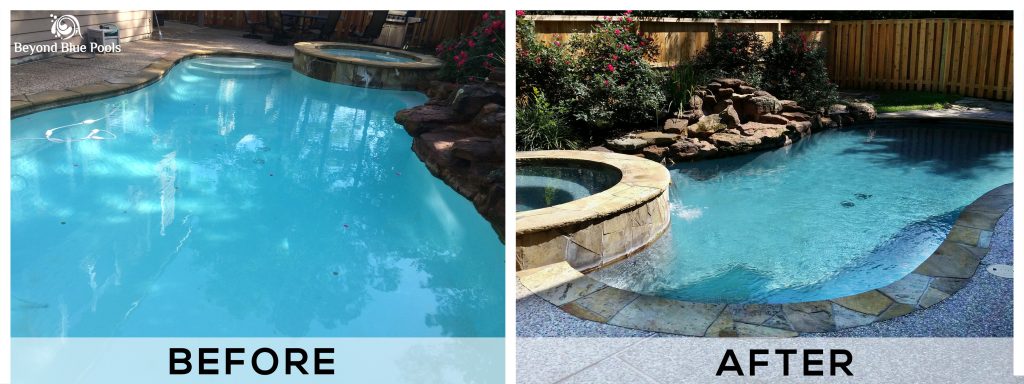Introduction
According to Mark Roemer Oakland, most pools need to be resurfaced every 10 years or so even if they are maintained properly. Regular pool maintenance is incredibly important and allows you to keep your pool in good condition for a longer period. However, over time, you will begin to notice signs that signal the need for a pool resurfacing and you mustn’t avoid it if you want to degrade the pool even further.
The Signs
Here are a few signs that you can look for to know when to resurface your pool:
- Surface stains – Surface stains or topical stains are formed due to mineral deposits such as salt, calcium, and copper along the pool walls. These cause discoloration on the pool flooring and pool wall and thus, ruin the natural beauty of the pool.
Surface stains are generally blueish-gray in color and make the water look cloudy. You can get rid of a small number of pool stains with the careful use of acid wash. However, you must exercise caution to preserve the integrity of the plaster. In order to remove large stains, you must hire the service of a professional and solve the problem with replastering or resurfacing.
- Roughness – Roughness on the pool flooring can be caused due to unexpected damage, chemical imbalances (pH), calcium deposits, and pool chemicals that eat away at the surface of the pool over a long period of use. Rough areas in the pool can not only become a source of annoyance when swimming but also cause numerous scratches on the feet. Plus, these can also damage swimming suits.
Replastering or resurfacing is the best solution for fixing rough surfaces on the pool. It provides better results and doesn’t cost much more than draining the pool, acid washing, and polishing the pool surface.
- Pool plaster is peeling or flaking – When the calcium or pH balance of the pool gets extremely low, it can cause the pool plaster to flake or peel away (spalling). This causes the pool water to become too acidic since the calcium hydroxide mixture gets dissolved in the water.
The only viable way to fix such an issue is to resurface or replaster the pool surface.
- Structural cracks – There can be many factors that can cause the surface of the pool to get cracked. For instance, cracks can form naturally over time due to a process known as cement hydration, large shifts in temperature, or when the surface is left exposed to the sun for some time after the pool water has been drained.
If your pool has lots of large cracks or spider web cracks, you must get it fixed as soon as possible. These not only look unsightly but eventually lead to pool leaks which can cause serious issues if left untreated.
Conclusion
Mark Roemer Oakland suggests you hire a reputed pool resurfacing company in order to get your pool resurfaced. Ensure to get a professional consultation and ask for their advice to achieve the best results.


Comments are closed.